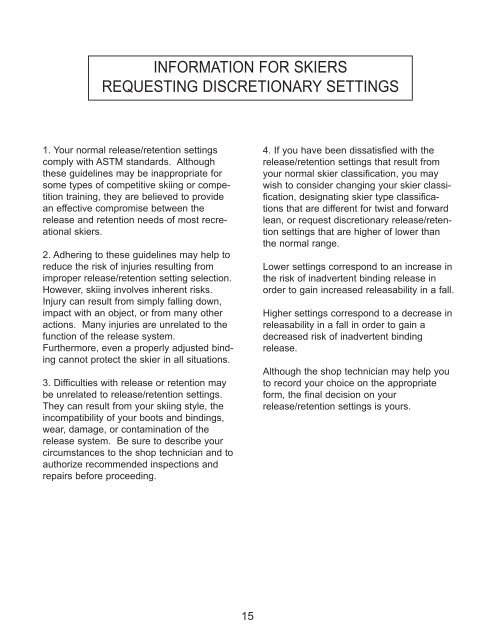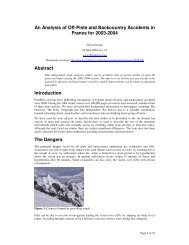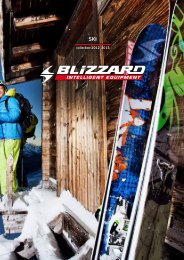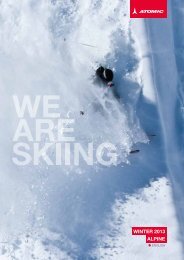You also want an ePaper? Increase the reach of your titles
YUMPU automatically turns print PDFs into web optimized ePapers that Google loves.
INFORMATION FOR SKIERS<br />
REQUESTING DISCRETIONARY SETTINGS<br />
1. Your normal release/retention settings<br />
comply with ASTM standards. Although<br />
these guidelines may be inappropriate for<br />
some types of competitive skiing or competition<br />
training, they are believed to provide<br />
an effective compromise between the<br />
release and retention needs of most recreational<br />
skiers.<br />
2. Adhering to these guidelines may help to<br />
reduce the risk of injuries resulting from<br />
improper release/retention setting selection.<br />
However, skiing involves inherent risks.<br />
Injury can result from simply falling down,<br />
impact with an object, or from many other<br />
actions. Many injuries are unrelated to the<br />
function of the release system.<br />
Furthermore, even a properly adjusted binding<br />
cannot protect the skier in all situations.<br />
3. Difficulties with release or retention may<br />
be unrelated to release/retention settings.<br />
They can result from your skiing style, the<br />
incompatibility of your boots and bindings,<br />
wear, damage, or contamination of the<br />
release system. Be sure to describe your<br />
circumstances to the shop technician and to<br />
authorize recommended inspections and<br />
repairs before proceeding.<br />
4. If you have been dissatisfied with the<br />
release/retention settings that result from<br />
your normal skier classification, you may<br />
wish to consider changing your skier classification,<br />
designating skier type classifications<br />
that are different for twist and forward<br />
lean, or request discretionary release/retention<br />
settings that are higher of lower than<br />
the normal range.<br />
Lower settings correspond to an increase in<br />
the risk of inadvertent binding release in<br />
order to gain increased releasability in a fall.<br />
Higher settings correspond to a decrease in<br />
releasability in a fall in order to gain a<br />
decreased risk of inadvertent binding<br />
release.<br />
Although the shop technician may help you<br />
to record your choice on the appropriate<br />
form, the final decision on your<br />
release/retention settings is yours.<br />
15
















